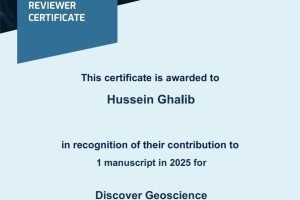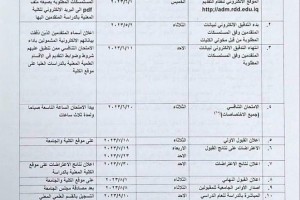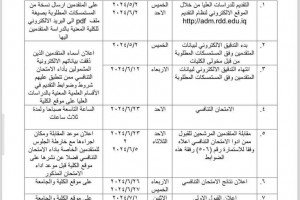

The Department of Geology at the College of Science discussed a Ph.D. thesis entitled (Integration of field work with geographic information systems in determining the intrusion of salt water to the Dibdaba Formation in Basra Governorate, southern Iraq). The researcher's thesis, Lamis Salem Abdel-Hussein, aims to determine the chemical origin of groundwater, the dominant hydrochemical processes, and the spatial distribution, to determine the areas of groundwater salinity due to mixing with marine water and other factors, and to evaluate the sensitivity of the Dibdaba reservoir to marine interference.
The study included field work for the study area in Khor Al-Zubayr, Safwan and Umm Qasr in Basra Governorate, southern Iraq, which lasted from January 2021 to January 2022. It included five monitoring periods to measure depths to groundwater levels and collect water samples for two winter and summer seasons for 19 wells for the purpose of laboratory analysis. And laboratory work that included chemical analyzes of the concentrations of anions, cations and heavy elements.
The results concluded that the groundwater was exposed to the effect of interference with marine water in light of the intensive pumping of wells in those areas, where the results of the piper and kada indicated that 80% of the groundwater samples were concentrated within the range of marine water (chloride-sodium water) and that 20% of The groundwater models are attributed to the reverse ion exchange process (chloride-magnesium-calcium water). Durov's results indicated that the concentrations of chloride, sodium and sulfate dominated, including the occurrence of rock dissolution reactions and a mixing process with marine water. The results of ionic ratios indicated that 40% of the models are within The high salinity range, and 26% is within the medium salinity range, and 33% is within the weak salinity range.










